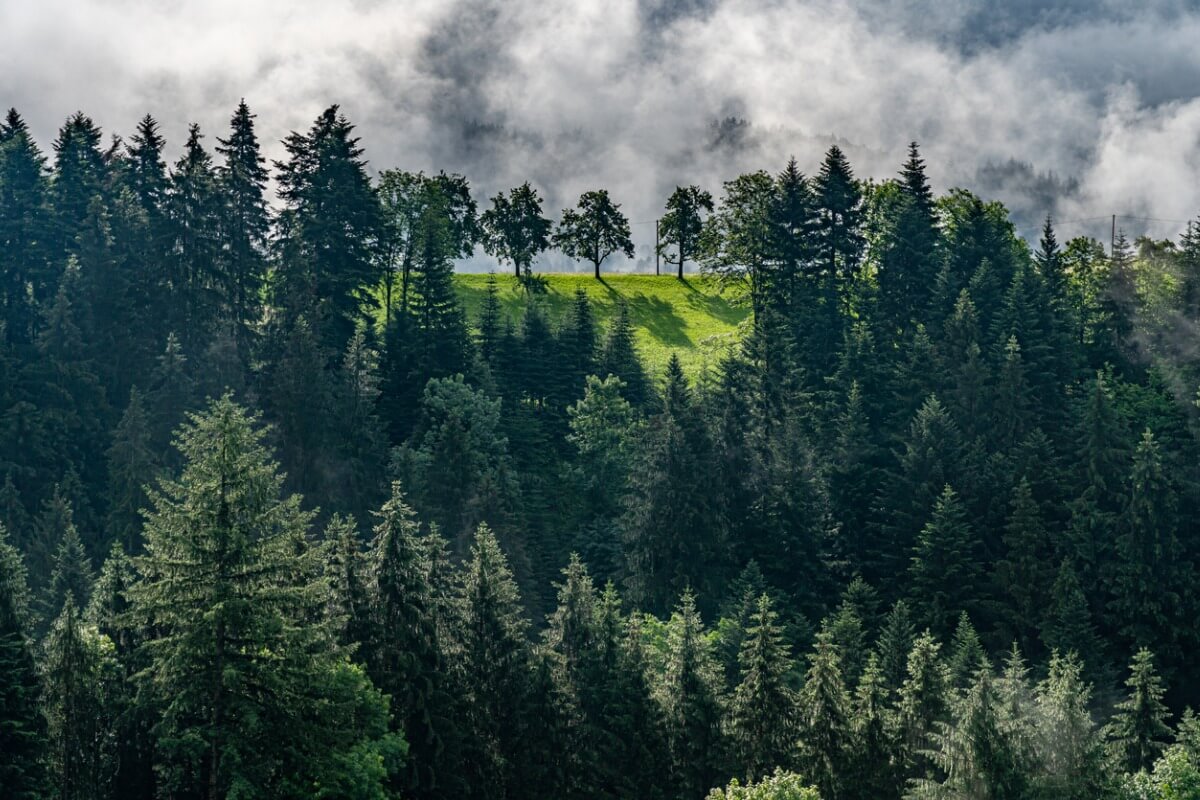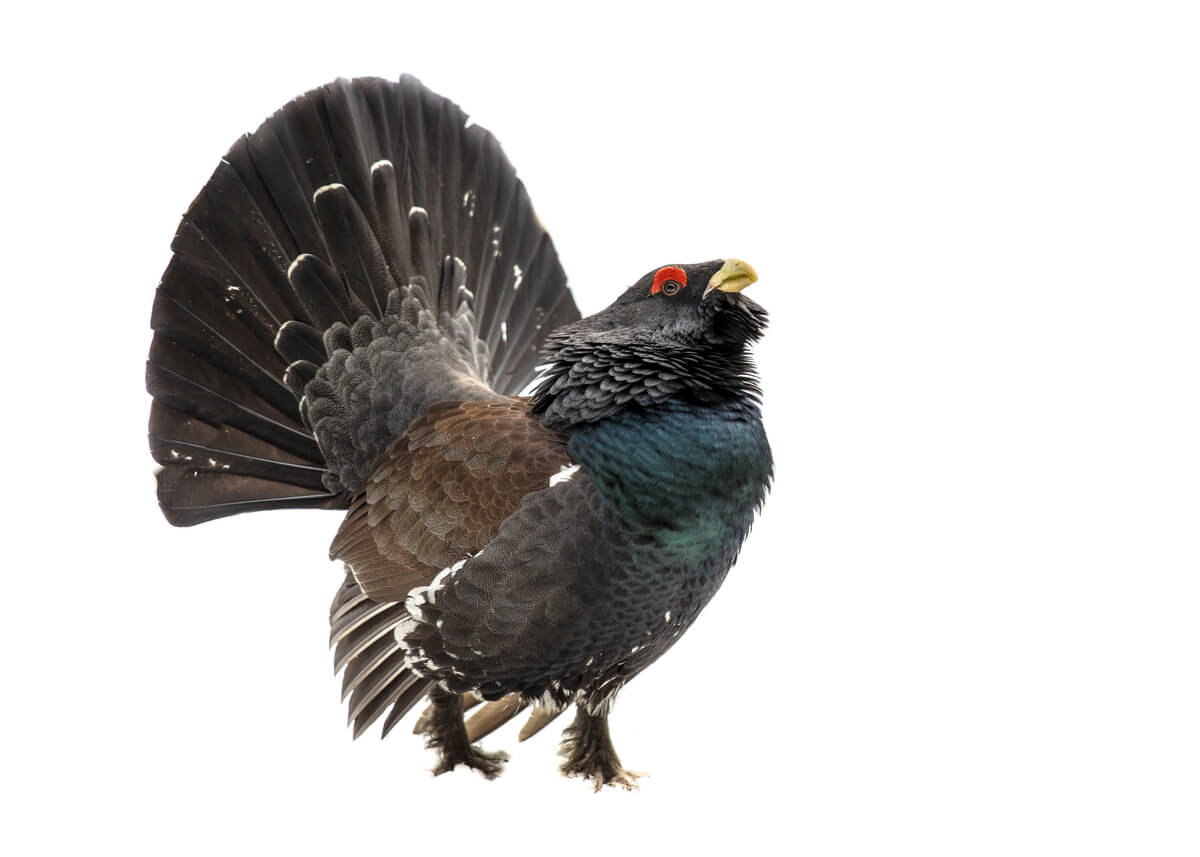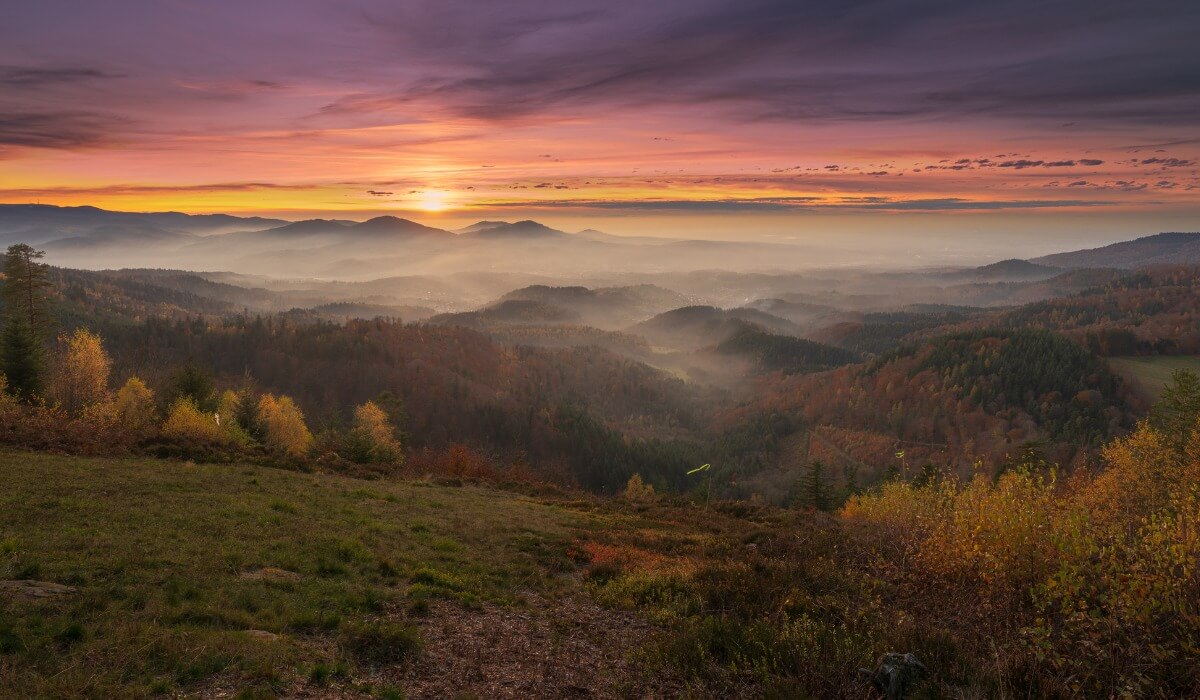Black Forest Animals: An Amazing Variety

The density of fir trees and vegetation makes walks through this forest dark and gloomy, which has earned it its name since the time of the Roman Empire. If you are planning to visit this geographic location, you may be interested in getting to know the animals of the Black Forest.
The Black Forest has incredible biodiversity and the animals that live in it have had to adapt to an environment with low luminosity. Later, you can read more about this unusual ecosystem and its main inhabitants. Don’t miss it.
What and where is the Black Forest?
The mountainous massif of the Black Forest begins in the Trifinio – a geographical point where Germany, Switzerland and France meet – and ascends 160 kilometers (100 miles) to the north of Germany, with a width of 50-60 kilometers (50 – 55 miles). It connects to the south with Freiburg and to the north with Freudenstadt and covers a total area of 6000 square kilometers (3700 square miles).
The Kinzig river marks the border and the center of the Black Forest. It also has reservoirs such as the Nagoldtalsperre, Wehrastausee, or the Stausee Kleine Kinzig. The most famous swamp in the Black Forest – and the most touristic – is the Schluchsee.
The geological origin of this forest is in a tectonic massif, which was divided leaving a trench through which the river Rhine runs. Thus, to the west of the Rhine, there was a mountain range (the Vosges) and, to the east, the massif from the Black Forest.
The climate is purely mountainous, with few temperature variations between winter and summer thanks to the high plant density, which regulates it. However, due to this vegetation itself, the humidity is very high compared to other places, especially in winter. The maximum average temperature is reached in July is 19° C (66 Fahrenheit) and the peak of rains is reported during the summer.
This ecosystem never exceeds 27° C (80 Fahnrenheit) and in winter it reaches night lows of -12° C (10 F)

Black Forest animals
The flora and fauna of this place stand out for their variety. In addition, this forest has a natural park in which certain species of animals, some endemic, are protected. Below, you can meet the most representative Black Forest animals:
- Grouse (Tetrao urogallus): This is a threatened bird, despite its wide distribution throughout the European continent. The biggest threats it encounters are deforestation and hunting, as it’s considered to have exquisite meat.
- Roe deer (Capreolus capreolus): This is the smallest deer in Eurasia and, unlike other species in its family, it’s solitary. It is a tremendously adaptive animal, inhabiting from lush forests to grasslands.
- Red squirrel (Sciurus vulgaris): This is a very familiar animal, as it’s the most widespread species of squirrel in the shady forests of Europe. Although not endangered, this species has drastically reduced its population numbers in some regions since the gray squirrel was introduced.
- Wild boar (Sus scrofa): Also very widespread in Europe, the wild boar adapts to any environment that has a minimum of plant cover and food. It’s omnivorous and very generalist.
- Wildcat (Felis silvestris): This feline, ancestor of the domestic cat, has a thicker coat of fur, especially for the coldest times of the year, and hunts small mammals and birds to survive. It’s a strict carnivorous mammal.
- Badense giant earthworm (Lumbricus badensis): This earthworm can reach 60 centimeters (2 feet) in length and is endemic to the Black Forest. It’s an essential species for recycling and soil aeration.
- Cows and horses from the Black Forest: Two breeds of these two species are unique to this area, as they were bred for livestock exploitation by the local population. They’re the Hinterwald cow and the Black Forest horse.
Due to its variety of fauna, the Black Forest has two natural parks and one national park within its territories. This ecosystem is a perfect place to promote environmental education and respect for flora and fauna, both in children and adults.

Places of interest
If you’re thinking of going to this place, you may want to visit certain areas to see the animals of the Black Forest in their entirety. The most iconic are these:
- Lake Titisee: This is the largest lake in the Black Forest, with a surface area of 1.3 square kilometers, 20 meters deep and located at an altitude of 850 meters.
- Feldsee: This small lake is higher (1,111 meters), and bathing is prohibited here in order to protect the isoetes echinospora, a rare species of isoettaceous plants that grows in water.
- Lake Mummel: This is the most visited lake in the Black Forest, as it offers the visitor spectacular views of the forested peaks, the Vosges Mountains and the Rhine Valley. It’s the highest glacial lake in the region, at 1036 meters above sea level.
- Triberg Waterfall: This is called the highest waterfall in Germany, but it’s not actually true, as it’s actually ranked ninth. However, it remains a place of interest due to its beautiful landscapes and villages.
- Gutach River: Triberg forest routes can be linked with a visit to this river, which also offers beautiful views of river flora and fauna.
- Mount Feldberg: This is the highest peak in the Black Forest at 1493 meters (nearly 5000 feet) above sea level. The most important tourism in this place is skiing, although there are currently stricter regulations in place due to the damage that occurred in the substrate.

As you can see, a region that isn’t that large can boast unique landscapes and species. Now that travel has become many people’s goals after two years of confinement, tourism should also be responsible. Make sure you’re a good guest at the Black Forest, and treat the ecosystem as if it were your home.
The density of fir trees and vegetation makes walks through this forest dark and gloomy, which has earned it its name since the time of the Roman Empire. If you are planning to visit this geographic location, you may be interested in getting to know the animals of the Black Forest.
The Black Forest has incredible biodiversity and the animals that live in it have had to adapt to an environment with low luminosity. Later, you can read more about this unusual ecosystem and its main inhabitants. Don’t miss it.
What and where is the Black Forest?
The mountainous massif of the Black Forest begins in the Trifinio – a geographical point where Germany, Switzerland and France meet – and ascends 160 kilometers (100 miles) to the north of Germany, with a width of 50-60 kilometers (50 – 55 miles). It connects to the south with Freiburg and to the north with Freudenstadt and covers a total area of 6000 square kilometers (3700 square miles).
The Kinzig river marks the border and the center of the Black Forest. It also has reservoirs such as the Nagoldtalsperre, Wehrastausee, or the Stausee Kleine Kinzig. The most famous swamp in the Black Forest – and the most touristic – is the Schluchsee.
The geological origin of this forest is in a tectonic massif, which was divided leaving a trench through which the river Rhine runs. Thus, to the west of the Rhine, there was a mountain range (the Vosges) and, to the east, the massif from the Black Forest.
The climate is purely mountainous, with few temperature variations between winter and summer thanks to the high plant density, which regulates it. However, due to this vegetation itself, the humidity is very high compared to other places, especially in winter. The maximum average temperature is reached in July is 19° C (66 Fahrenheit) and the peak of rains is reported during the summer.
This ecosystem never exceeds 27° C (80 Fahnrenheit) and in winter it reaches night lows of -12° C (10 F)

Black Forest animals
The flora and fauna of this place stand out for their variety. In addition, this forest has a natural park in which certain species of animals, some endemic, are protected. Below, you can meet the most representative Black Forest animals:
- Grouse (Tetrao urogallus): This is a threatened bird, despite its wide distribution throughout the European continent. The biggest threats it encounters are deforestation and hunting, as it’s considered to have exquisite meat.
- Roe deer (Capreolus capreolus): This is the smallest deer in Eurasia and, unlike other species in its family, it’s solitary. It is a tremendously adaptive animal, inhabiting from lush forests to grasslands.
- Red squirrel (Sciurus vulgaris): This is a very familiar animal, as it’s the most widespread species of squirrel in the shady forests of Europe. Although not endangered, this species has drastically reduced its population numbers in some regions since the gray squirrel was introduced.
- Wild boar (Sus scrofa): Also very widespread in Europe, the wild boar adapts to any environment that has a minimum of plant cover and food. It’s omnivorous and very generalist.
- Wildcat (Felis silvestris): This feline, ancestor of the domestic cat, has a thicker coat of fur, especially for the coldest times of the year, and hunts small mammals and birds to survive. It’s a strict carnivorous mammal.
- Badense giant earthworm (Lumbricus badensis): This earthworm can reach 60 centimeters (2 feet) in length and is endemic to the Black Forest. It’s an essential species for recycling and soil aeration.
- Cows and horses from the Black Forest: Two breeds of these two species are unique to this area, as they were bred for livestock exploitation by the local population. They’re the Hinterwald cow and the Black Forest horse.
Due to its variety of fauna, the Black Forest has two natural parks and one national park within its territories. This ecosystem is a perfect place to promote environmental education and respect for flora and fauna, both in children and adults.

Places of interest
If you’re thinking of going to this place, you may want to visit certain areas to see the animals of the Black Forest in their entirety. The most iconic are these:
- Lake Titisee: This is the largest lake in the Black Forest, with a surface area of 1.3 square kilometers, 20 meters deep and located at an altitude of 850 meters.
- Feldsee: This small lake is higher (1,111 meters), and bathing is prohibited here in order to protect the isoetes echinospora, a rare species of isoettaceous plants that grows in water.
- Lake Mummel: This is the most visited lake in the Black Forest, as it offers the visitor spectacular views of the forested peaks, the Vosges Mountains and the Rhine Valley. It’s the highest glacial lake in the region, at 1036 meters above sea level.
- Triberg Waterfall: This is called the highest waterfall in Germany, but it’s not actually true, as it’s actually ranked ninth. However, it remains a place of interest due to its beautiful landscapes and villages.
- Gutach River: Triberg forest routes can be linked with a visit to this river, which also offers beautiful views of river flora and fauna.
- Mount Feldberg: This is the highest peak in the Black Forest at 1493 meters (nearly 5000 feet) above sea level. The most important tourism in this place is skiing, although there are currently stricter regulations in place due to the damage that occurred in the substrate.

As you can see, a region that isn’t that large can boast unique landscapes and species. Now that travel has become many people’s goals after two years of confinement, tourism should also be responsible. Make sure you’re a good guest at the Black Forest, and treat the ecosystem as if it were your home.
All cited sources were thoroughly reviewed by our team to ensure their quality, reliability, currency, and validity. The bibliography of this article was considered reliable and of academic or scientific accuracy.
- BirdLife International. 2016. Tetrao urogallus. The IUCN Red List of Threatened Species 2016: e.T22679487A85942729. https://dx.doi.org/10.2305/IUCN.UK.2016-3.RLTS.T22679487A85942729.en. Downloaded on 05 July 2021.
- Lumbricus badensis in Riviere S (2010). The European Nucleotide Archive (ENA) taxonomy. European Nucleotide Archive (EMBL-EBI). Checklist dataset https://doi.org/10.15468/avkgwm accessed via GBIF.org on 2021-07-05.
- Ries, J. B. (1996). Landscape damage by skiing at the Schauinsland in the Black Forest, Germany. Mountain Research and Development, 27-40.
This text is provided for informational purposes only and does not replace consultation with a professional. If in doubt, consult your specialist.








